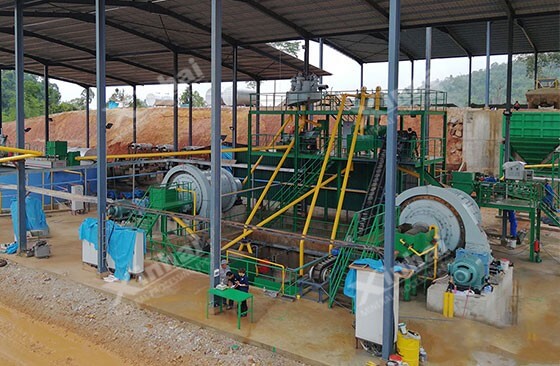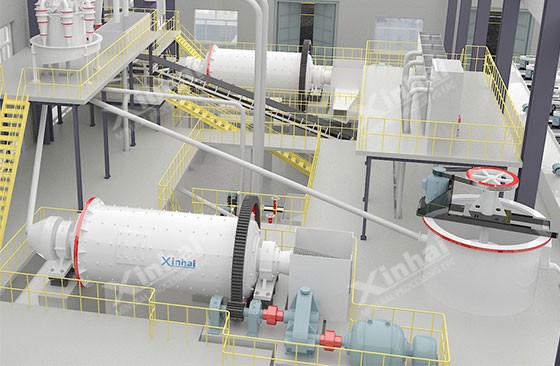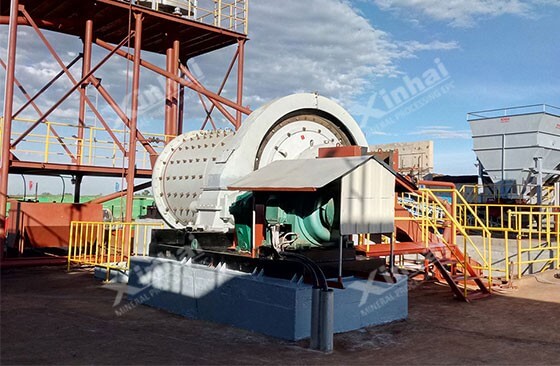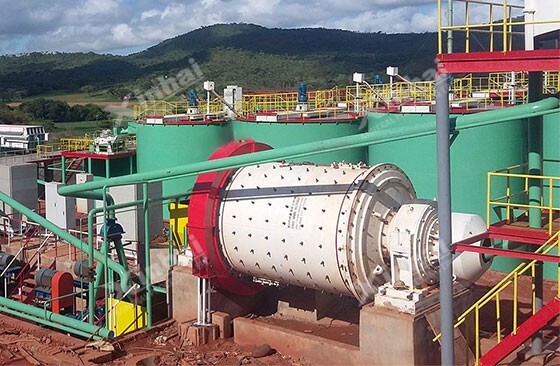

Warm Tip: If you want to know more details about equipment, solutions, etc, please click the button below for free consultation, or leave your requirements!
In this article, you'll get some informations about some questions about grinding and classifying stage before mineral processing.
There are three kinds of commonly used one-stage milling classification process.
1) One closed-stage grinding only contain process of check classification, which is widely used in nonferrous metal andferrous metal processing plant at present.
2) One closed-stage grinding process combines pre-classification and check classification.
3) One closed-stage grinding process with control classification, which is very uneven feed size, difficult to properly load balls, and low grinding efficiency, is rarely used in mineral processing plant.

There are mainly three commonly processes for two-stage grinding classification:
1) The two-stage and one-stage closed-circuit grinding and classification process is applicable to beneficiation plant with large feed size and production scale.
2) The two-stage and two-stage closed-circuit grinding process, often used for the final product which is required by the size less than 0.15mm in large and medium-sized beneficiation plant.
3) Stage separation two-stage closed-circuit grinding and classification process, which is applicable to the case where a considerable number of useful minerals in the first stage of grinding products have reached monomer dissociation, can reduce grinding costs and improve metal recovery.
Compared with the second stage grinding and classification process, the number of classifiers in the first stage grinding grading process is less and the investment is low. Easy to operate in production, and also easy to adjust. There is no intermediate product transportation between sections, and multiple series of grinders can be placed on the same level. The equipment configuration is simple, and the shut down of one sectionof mill or classifier will not affect the work of another section of mill, and the shut down loss is small. And each series can be installed larger equipment. However, at the same time, in the first stage of grinding and classification process, the grain size range of the mill is wide, it is difficult to properly load the ball, the mill efficiency is low, and it is not easy to get the coarse final product.

We usually use the fineness standard, which can go through 200 mesh sieve screen, as the fineness of the product with the percentage of the product to achieve the fineness of the total expressed, such as grinding fineness -200 mesh 50% or -0.074mm 50%. The greater the percentage, the finer the product.
Commonly for mostores, the finer grinding fineness is, the better mineral desorption effect. So that the recovery rate can be improved. Therefore, under certain treatment capacity, grinding fineness will be improved as much as possible. But some mineral grinding fine too fine easy to produce slime, so grinding fineness is not the finer the better, generally reach the most useful mineral monomer separation fineness. In addition, on the premise of ensuring the mineral processing index, appropriately relaxing the grinding fineness can reduce the energy consumption of grinding grading operation and improve productivity.
Thereare many factors affecting grinding fineness, including the property of rawore, crushing particle size, ore feed size, the number and size ratio of steel balls, the size of classifier openings and so on.

The production capacity of the mill can be divided into two parameters, namely, the production capacity of the mill and the utilization coefficient of the mill.
1) Production capacity of the mill
This parameter refers to the amount of ore processed by the mill per hour in unit t/(stage · h) with a certain amount of ore feed and product size.
2) Utilization coefficient of mill
This parameter is usually expressed by the English letter q, which refers to the average value of the amount of ore processed by the mill in the effective volume per unit of time. The unit ist/(m3·h), which is one of the important indexes to measure the working quality of the mill. When the grain size of the ore and the grain size of the productare similar, the properties and operating conditions of the ore in the mill can be judged by using the parameter of the mill. By increasing the utilization coefficient of the mill, the production capacity of the mill can be effectively improved.
The influencing factors of these two parameters mainly include feeding property, particle size requirements of the product, type and model of the grinding mill,mill speed, grinding medium, filling rate and so on. In order to improve the output of the grinding mill, it can be achieved by reducing the feed size and removing the surrounding rock and stone in advance, that means, improving the quality of the raw ore to prompt the grindability of the ore and increase the processing capacity of grinding, so as to reduce the energy consumption while increasing the output of the grinding mill.

The operability of the grinding and classifying processing can also be called the operation rate, which refers to the percentage of the calendar hours that grinding mill-classifier group actually works. In the concentrator, the operability is usually calculated once a month, and the monthly average operation rate is calculated for the whole year.
The purpose of calculating the operability is to determine the energy consumption of the grinding mill. Generally, the energy consumption of grinding and classifying processing accounts for most of the energy consumption of the total concentrator. Moreover, the operability can be used to determine the management level of concentrator, and analyze the reasons affecting grinding mill - classifier can not operatenormally. Under the normal operation condition of concentrator, increasing the operability can reduce the concentrate cost and improve the economic benefit.
The above is some questions you need to know about grinding and classificaiton. If you have more question about this topic, you can contact us by leaving a message or online customer service.
Last: Mineral Processing Experiment, Diagnosis Book of Mine Benefit
Next: 3 Common Questions about Gold Flotation Processing Technology
13 Important Indicators In Grinding And Classification Stage
 0
0
 1779
1779
24 Types of Crushing Plant
 0
0
 2375
2375
